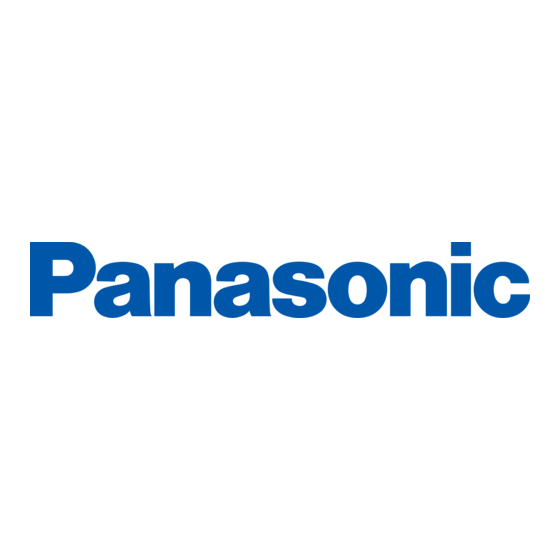Panasonic AG-HMC80PJ Посібник - Сторінка 14
Переглянути онлайн або завантажити pdf Посібник для Відеокамера. Panasonic AG-HMC80PJ. Panasonic AG-HMC80PJ 14 сторінок. Brochure
Також для Panasonic AG-HMC80PJ: Посібник (19 сторінок), Посібник (18 сторінок), Посібник (13 сторінок), Брошура (16 сторінок)

THE AVCHD WORKFLOW – ARCHIVINg
Once your project is finished, you will want to archive your High Definition AVCHD footage (not
just your ProRes footage). There are a number of options available at this time depending on your
budget and how long you want to keep the footage. How long you want to keep your footage is a
very important question when dealing with Archiving. The answer to "How Long You Want to Keep
It?" will determine what media you store it on today. If you want to keep your data for 1 to 10 years,
you have many options, but if you must keep your material for 20 years or longer, then your options
decrease. And regardless of the media you choose today, be prepared to move your data as new
improved storage becomes available.
keY poinT #4. The seCreT To suCCessful ArChiVing of AnY
Make multiple copies and move your data as
file bAseD meDiA is reDunDAnCY AnD migrATion.
technology advances.
ARCHIVINg TO HARD DRIVE (SHORT TERM STORAgE)
The quickest and least expensive way to archive your AVCHD footage is to copy your files to a hard
drive. Note: This is Short Term Storage. This is accomplished in the same way as copying any other
data to a hard drive. Copy the Private Folder of your AVCHD to your drive. There are a number of
manufacturers who make inexpensive USB hard drives. I suggest copying to two different hard
drives, be redundant. Also, these hard drives should not be considered permanent long-term
storage. Create a regular schedule to move your data to newer hard drives. Migrate your data!
ARCHIVINg TO BLU-RAY DISC (MID-TERM STORAgE)
To archive to a Blu-ray, you will basically be making a Blu-ray Rom data disc. To do this, you will
need a Blu-ray burner, Blu-ray media, and specific Blu-ray burning software, such as Roxio Toast 10
or Adobe Encore (part of CS4 suite). Remember, in order to retrieve your data from this archive in
the future, you will need a Blu-ray drive. Keep your eye on how technology advances and migrate
your data to new storage technology as needed.
ARCHIVINg TO STANDARD DVD DISCS (MID-TERM STORAgE)
Although DVD-R media is technically not specified as archival media, you can archive your data
onto standard DVD discs. Since these discs do not hold high amounts of data, this is very time
consuming and requires a lot of discs. Remember, in order to retrieve your data from this archive in
the future, you will need a DVD drive.
ARCHIVINg TO DLT OR LTO TAPE (LONgEST TERM STORAgE)
If you have to store your footage for a very long time and want absolute confidence in your archival
media, do what financial and medical institutions have been doing for years -- back up your data
on either DLT (Digital Linear Tape) or the newer LTO (Linear Tape Open). These are more expensive
options than those listed above, but they are time tested. A number of companies such as
Quantum (www.quantum.com), Cache-A, (http://cache-a.com/products.php ) and others make DLT
and LTO tape drives and media. (See WWW.LTO.org for more info)
SIMPLE, QUICK, FLExIBLE AND INExPENSIVE! THAT IS THE AVCHD PRO EDITINg WORKFLOW.
Please see the AVCHD WORKFLOW ACQUISITION White Paper. You will find that shooting and
transferring AVCHD material is again simple, quick, flexible and inexpensive.
About the Authors:
bernie mitchell is president of silver platter productions, inc. an emmy nominated producer/Director, a multimedia person of
the Year and member of the DVD Association hall of fame. bernie is the panasonic AVChD evangelist and a paid consultant
to panasonic.
14
robert sullivan, hD eng workflow specialist, panasonic solutions Company
